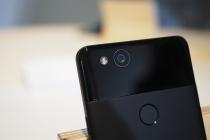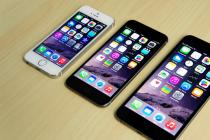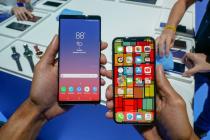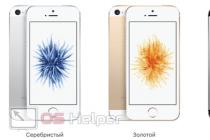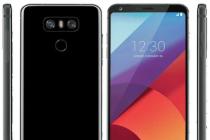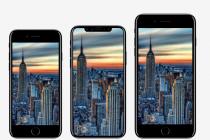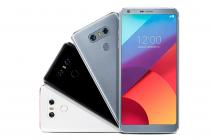A smartphone is a rather complex and expensive device, practically not inferior in characteristics to a desktop computer. Therefore, its choice should be approached thoroughly, but at the same time be prepared that not all your requests will be satisfied even by the flagship models.
Many users prefer not to bother too much on the selection of a smartphone model according to technical characteristics and, in order to avoid problems, they simply buy a top-end device, expecting that, given its exorbitant cost, everything will be OK. Alas, even the flagships (and sometimes, they are) can greatly disappoint the owner, given the overestimated expectations.
Before choosing a model, you should formulate your preferences. The wording “Everything should be fine” does not work here. Therefore, we put pluses in front of such requests as: you need expensive, average or inexpensive, you need it for games and entertainment, it is required for everyday tasks, social networks and work, for calls and so on ... little things, and so on, until the end conditions.
Based on the received requirements, you can already go to the communication salon or simply open the website of the online store.
First, it's beautiful
No matter how trivial it sounds, the first thing that most users choose is the design of the device. No matter how sophisticated the smartphone is, if you don't like it, then owning it will not bring satisfaction.
But, if the phone slows down or malfunctions, it will only bring you negative. After this introduction, let's talk about the characteristics that are worth stopping at in order to get the best smartphone for your needs.
Too much processor
Indeed, the speed of the device depends on the type of processor, how quickly it responds when working with the interface and in applications.

It is important to remember that most modern mobile processors, be it inexpensive MediaTek Helio, Intel, Huawei HiSilicon, Samsung Exinos or Qualcomm Snapdragon, all provide approximately equal comfortable performance in the interface and when launching programs. Therefore, if you are not an avid gambling addict, then you should not be guided by the super-powerful 12-core latest CPUs from the last in the list of manufacturers. This will save you about 30% of the cost of the device.
You can learn more about the peculiarities of the latest processors from Samsung in our article ""
How much RAM is enough?
Most modern smartphones from the middle and top segment are equipped with 3-4 GB of RAM. Inexpensive smartphones come with 2GB. The larger this parameter, the more data your device can simultaneously process and the more running applications can be in memory. The system does not need to unload something from the RAM in order to enable another more resource-intensive program to work. This adds speed and comfort.

For everyday use, when working with a browser and multimedia, 2-3 GB is enough. If you are used to working in several programs at the same time and love mobile games, then you should consider a phone with 4 GB of RAM. Devices with 6 and 8 GB can now be considered a marketing ploy, which can be justified if you want to make a reserve for the future, when applications will grow in size by 3-4 times.
Flash memory: more is better
The amount of built-in flash memory determines the amount of user data that can be stored on this drive and the number of applications installed.
Budget smartphones come with 8 GB of flash drive, of which only half are available to the user. This is unacceptably small and it is better to refuse such devices, even if they have a slot for memory cards. Acceptable can be considered 16 GB (about 11 GB available to the user) and 32 GB. A good option is a smartphone with 64GB of internal storage. This should be more than enough for programs and music with photos and videos.
We do not recommend targeting smartphones with 128 GB of internal space that do not have a memory card slot. This is due to the fact that with a very large volume of the built-in disk, the user uncontrollably begins to accumulate a lot of personal data on it, especially photos and videos, forgetting to make a backup copy. If the device is lost or damaged, as a rule, the built-in disk also becomes inaccessible, which means that all data will be lost.
In any case, if you value your data, do not forget to save it either to the cloud (this is convenient, but there is a risk of leakage), or to a PC or an external drive.
A high-quality camera is the key to a good mood

The main trend in smartphone construction in recent years is to improve the quality of shooting built-in cameras. First there was a race with megapixels (in one of Nokia smartphones, the camera produced images with a resolution of 40 megapixels), now each manufacturer considers it his duty to place as many cameras on the smartphone as possible. An untrained user falls into a stupor, seeing advertisements that the smartphone is equipped with 4 cameras: 2 main and 2 selfies.
Some flagships have dual camera modules, in which the second plays a supporting role to improve the picture. If you are given this as a super achievement worth paying extra for, take it with reasonable skepticism. One camera is enough for high-quality pictures. The second can be wide-angle - a great opportunity to get more coverage in tight spaces. The main thing is that the built-in software processes the data coming from the photosensor well.

If you are looking for a smartphone with a good camera, be guided by parameters such as the resolution of the matrix - 13-16 megapixels (quite enough for detailed shots), high-quality optics, the presence of an image stabilizer (required) and the aperture value. The latter parameter is important for high-quality shots in low-light places or in the evening and at night outdoors. It is desirable to have optics with an aperture of 1.8, but high-quality daytime shots can be obtained with F2.0.
If your chosen smartphone is equipped with an aperture of F2.0 or F2.2, then the camera will be able to compensate for the low illumination of the subject only with a long exposure and the function of optical stabilization. The latter parameter is very rare in budget smartphones, but it is indispensable for obtaining high-quality photos and videos.
High-capacity battery extends life

When choosing a smartphone as an everyday tool for work and play, you should take care of a sufficient supply of energy. If the battery capacity of your chosen one is more than 3000 mAh, then this can be called the best option. This capacity is enough for two days of moderate use, despite the fact that the smartphone is equipped with a Full HD display. For an HD screen, the operating time of the device from a single charge can be doubled.
In any case, you need to remember that a battery with a large capacity - 5000 or 6000 mAh, although it will extend the life of the gadget for a couple of days, but also weighs twice as much, and it takes a very long time to charge.
If you don't have time to mess with the power adapter cords, choose a smartphone with wireless charging function.
Screen resolution: super small - not super convenient
 The higher the resolution, the more detail you will see in the image. We recommend opting for screens with a Full HD matrix if you have excellent eyesight and appreciate the high definition of small objects, including those in the smartphone menu. If your vision is impaired by books, games or age, then an HD display is enough. Are you planning to use a virtual reality helmet for viewing 360 video and 360-degree panoramas? Then you should choose a model with a screen resolution of 2K or QHD (2560 × 1440 pixels).
The higher the resolution, the more detail you will see in the image. We recommend opting for screens with a Full HD matrix if you have excellent eyesight and appreciate the high definition of small objects, including those in the smartphone menu. If your vision is impaired by books, games or age, then an HD display is enough. Are you planning to use a virtual reality helmet for viewing 360 video and 360-degree panoramas? Then you should choose a model with a screen resolution of 2K or QHD (2560 × 1440 pixels).
The size of the diagonal is an ambiguous thing. Someone needs to control a smartphone with one finger, while someone needs a large screen in order to have more information in front of their eyes. There is no single solution. Let's just say that taking a smartphone smaller than 5.5 inches is no longer fashionable today.
Additional options that matter
 Among the important desirable characteristics, it is worth noting the presence of a headphone output 3.5. Manufacturers are gradually abandoning it, but in vain. It is very convenient, especially if you often use your favorite wired headset. In the case of wireless headphones, you can endure the lack of a jack, but enjoy the versatility of the USB Type-C port.
Among the important desirable characteristics, it is worth noting the presence of a headphone output 3.5. Manufacturers are gradually abandoning it, but in vain. It is very convenient, especially if you often use your favorite wired headset. In the case of wireless headphones, you can endure the lack of a jack, but enjoy the versatility of the USB Type-C port.
Of the other parameters that you will not see in the characteristics from the manufacturer, but which are worth looking at are the convenience of the interface and reliability, which are measured empirically. It is also better to search for this information on the web.

